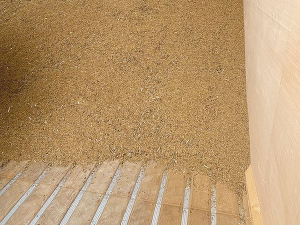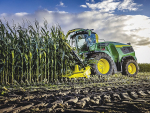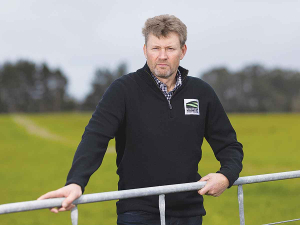There will be many advocates for different methods of crop drying, but the aim of on-floor crop drying is to get a totally uniform airflow across the whole floor.
As air will take the path of least resistance, in some systems dead zones can occur as a wider spacing between the vents encourages the air to go straight up and out. This leaves a triangular “dead zone” between the vents with little to no drying, leading to the likely rejection of the crop.
By contrast, the closely spaced (178mm) vent meshes on Flach and Le-Roy (FLR) timber floors will achieve very even drying as air is forced sideways before it goes upwards. FLR timber floor meshes are recessed below the timber level, which means there is no contact between vehicle tyres and the meshes.
This removes the tendency to push grain or seed into the vents and block them, which creates problems with uniform drying. Additionally, recessed meshes also mean less damage from stones or foreign objects stuck in tyre treads; a well- known problem with level-floor vents.
The FLR timber floor system features a layout that sees the main airduct running down the side of the floor, allowing users to direct airflow to any part of the floor by simply closing the trapdoors in an area not required. This allows the user to easily dry a part of the floor or dry more than one crop at a time on the same floor, which gives maximum versatility.
By contrast, systems which have the airduct running along the back of the floor, means the whole of that lateral run must be covered with crop before the fan(s) can be started, giving much less flexibility.
A FLR timber floor only requires a flat and level concrete base and is easy to maintain and repair if needed. It is quick, simple and cheap to replace a damaged timber board if necessary.
Richard Flach of Flach & Le-Roy Ltd, UK, has spent several decades installing timber drive-on drying floors, as well as associated specialist box-store onion and garlic drying systems in various countries around the world.
Having studied agricultural engineering, he began his ventilation career in 1984 designing airflow and ventilation systems for the agricultural industry.
Speak with Richard at Gough Agritech’s site, 662 and 663.



















